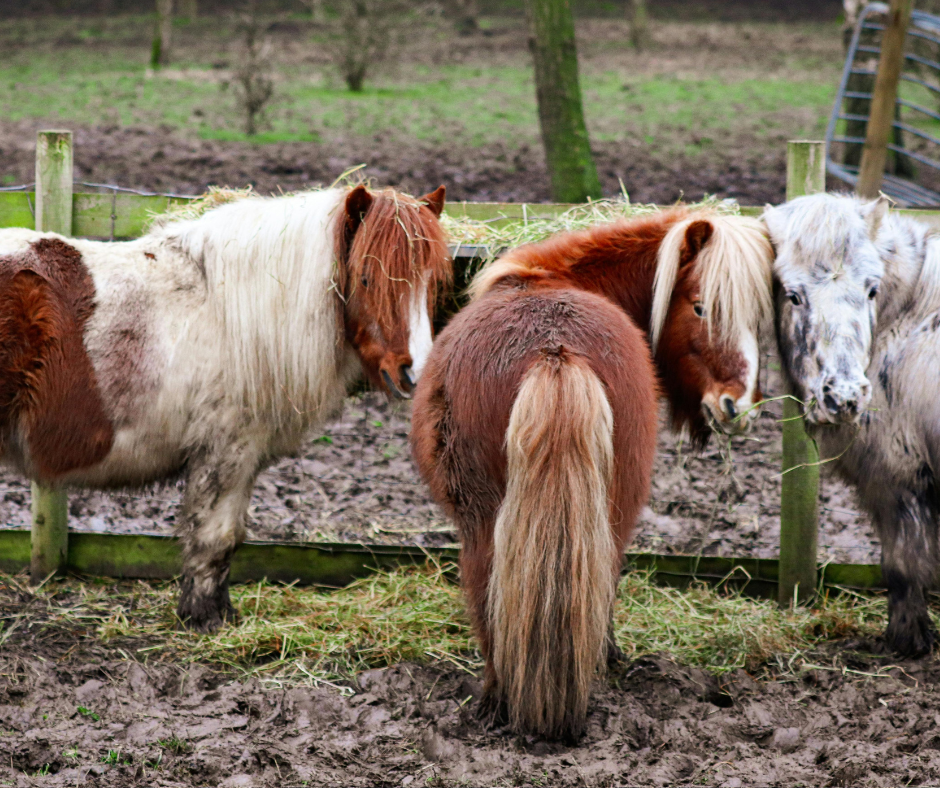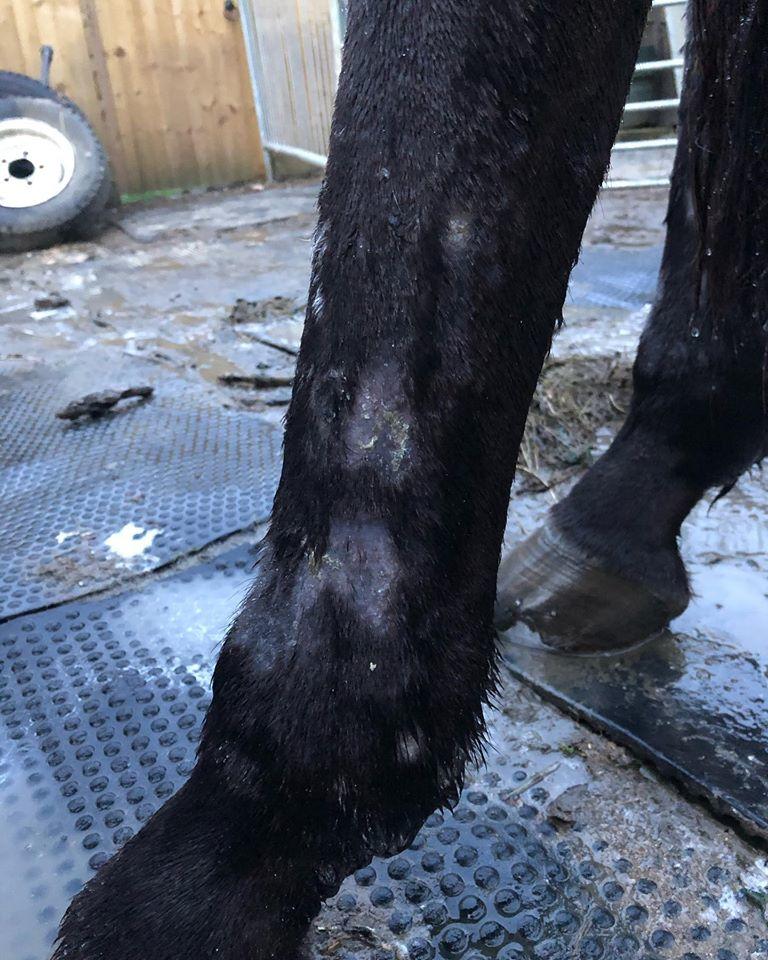
"Muddy Hell!" - a beginner's guide
Share
Mud Fever is a bit of a mystery. It seems to come from nowhere. The microbes responsible are probably already on the skin just waiting for an opportunity to get in a bit deeper and cause trouble.
Horses prone to mud fever include the elderly, those with compromised immune systems from Cushings Syndrome, or other metabolic conditions, and those who have had previous infections (although young healthy horses can also succumb if the conditions are right).
One way in is through tiny cuts and cracks so you need to prevent these occurring if you can.

Here at Biteback we don't advise brushing the fetlocks or hosing/shampooing often, as this can dry out the skin so it’s more likely to crack. It’s better to keep the skin as dry as possible by towelling and powdering with a talc-based product once a day. Let mud dry out and fall off when you massage the fetlocks.
Try to keep your horse in as natural an environment as possible – plenty of room to move about, lots of grass/hay and some field companions (as psychological health is also important). My mare went down with a nasty bout of it when she went to a stud to have her foal. Her environment was alien to her as she was in a postage stamp paddock with poor grass and, although there were other mares adjacent, she had no companions. I think she pined and lost condition and this led to her being susceptible to skin infections.
If you think your horse is susceptible, examine the fetlocks each day by massaging them firmly with your fingers, feeling for any granular rough patches. Biteback’s Sweet Relief Quick-Silver spray is a useful cleanser to spray on while you feel for lumps and bumps. It lubricates the skin as well as cleaning it. We also use a good barrier cream applied once a day to protect the skin’s mantle if conditions are very wet or very dry.
Early Signs:
- fetlocks itching and horse rubbing one lower hind leg with the other
- no heat felt
- slight grainy feel and skin/hair scaling off when massaged with fingers
- no pain on massaging
What we do at Biteback: Cleanse the areas thoroughly with Quick-Silver Spray twice a day to sterilise the skin and sweep away any microbes.
Developed Signs:
- more extensive grainy hard lumps forming very close to the skin
- some visible changes noticeable on pink skin
- some filling above the fetlock joint
- extensive loss of skin/hair when massaging firmly
- no pain on massaging

What we do at Biteback: Cleanse the areas thoroughly with Quick-Silver spray, dab dry with wads of cotton wool and powder to further dryness with Flowers & Zinc then lightly apply Mudbar Plus cream as a supportive barrier cream twice a day.
Full blown Signs:
- Extensive scabby areas very visible all around the joint with bloody inflammation between scabs
- Painful to touch and filling of legs above the joints
- Horse out of sorts and in pain
What we do at Biteback: As above, but if the scabs are very firmly attached and extensive, also wrap clingfilm around the joint after the treatment above overnight. Then Vetwrap the area. Allow the horse to be turned out, if at all possible, to reduce filling. Remove the film next morning and do the steps above for developed symptoms. Leave unwrapped throughout the day. Re-wrap overnight until most of the hard, crusty scabs have fallen off.
If the condition does not visibly improve with this regime within 3 or 4 days, your horse may need an oral antibiotic from the vet and/or a steroid dose to kick start healing. Always consult a vet if unsure that the situation is being managed.
© Kath Shaw 2020
